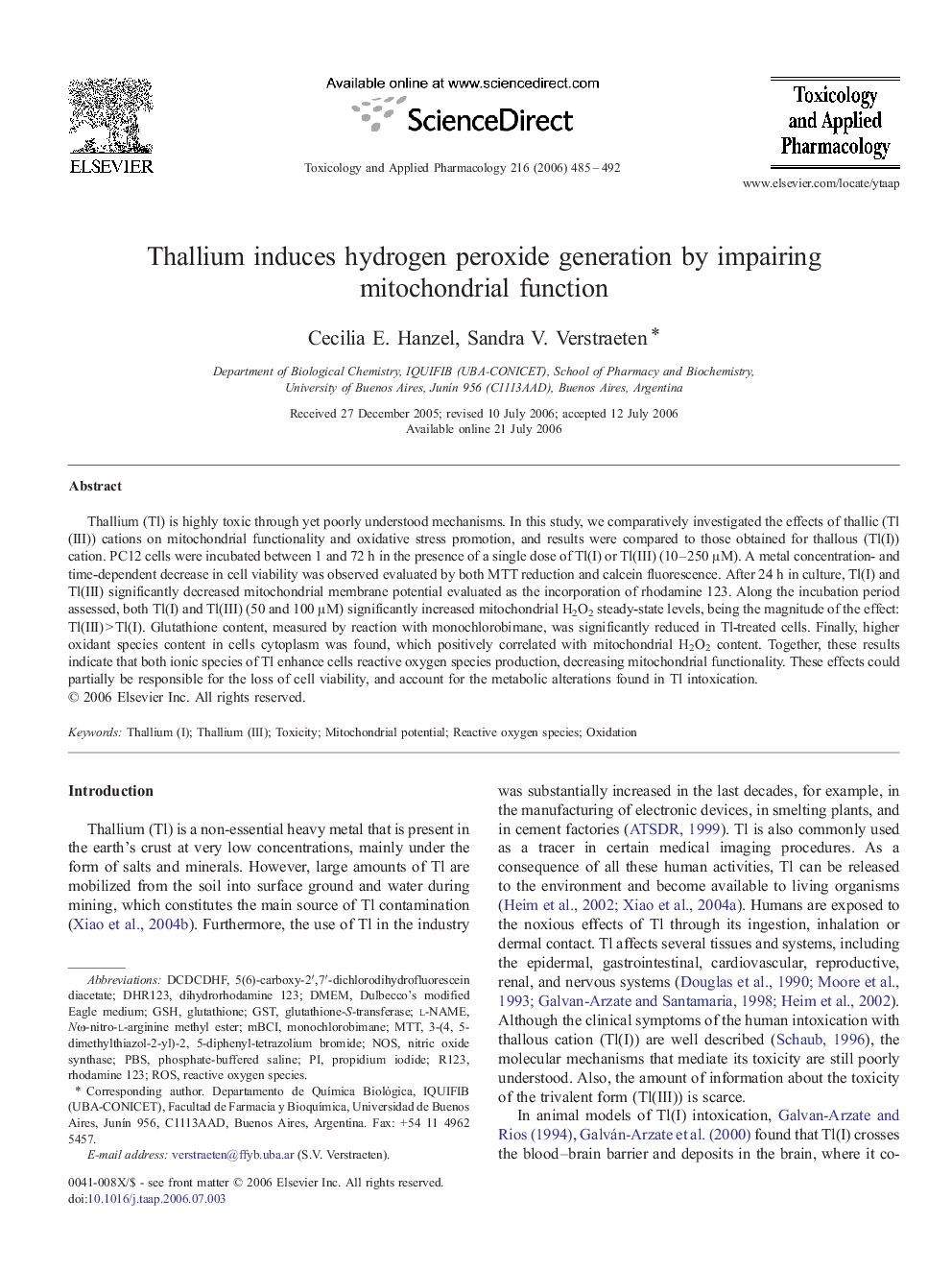| Article ID | Journal | Published Year | Pages | File Type |
|---|---|---|---|---|
| 2571184 | Toxicology and Applied Pharmacology | 2006 | 8 Pages |
Thallium (Tl) is highly toxic through yet poorly understood mechanisms. In this study, we comparatively investigated the effects of thallic (Tl(III)) cations on mitochondrial functionality and oxidative stress promotion, and results were compared to those obtained for thallous (Tl(I)) cation. PC12 cells were incubated between 1 and 72 h in the presence of a single dose of Tl(I) or Tl(III) (10–250 μM). A metal concentration- and time-dependent decrease in cell viability was observed evaluated by both MTT reduction and calcein fluorescence. After 24 h in culture, Tl(I) and Tl(III) significantly decreased mitochondrial membrane potential evaluated as the incorporation of rhodamine 123. Along the incubation period assessed, both Tl(I) and Tl(III) (50 and 100 μM) significantly increased mitochondrial H2O2 steady-state levels, being the magnitude of the effect: Tl(III) > Tl(I). Glutathione content, measured by reaction with monochlorobimane, was significantly reduced in Tl-treated cells. Finally, higher oxidant species content in cells cytoplasm was found, which positively correlated with mitochondrial H2O2 content. Together, these results indicate that both ionic species of Tl enhance cells reactive oxygen species production, decreasing mitochondrial functionality. These effects could partially be responsible for the loss of cell viability, and account for the metabolic alterations found in Tl intoxication.
